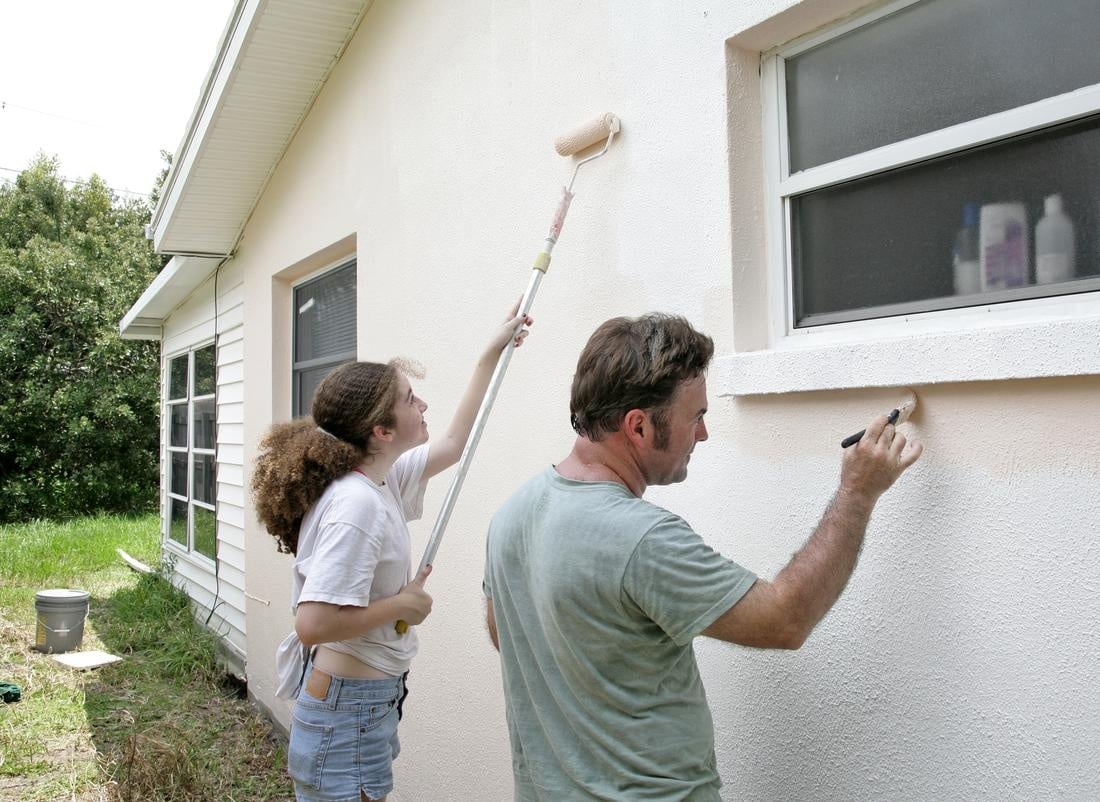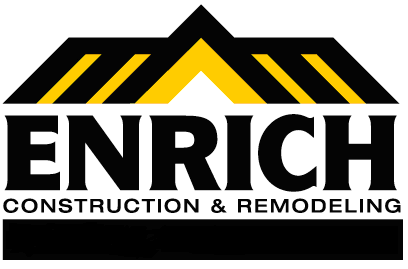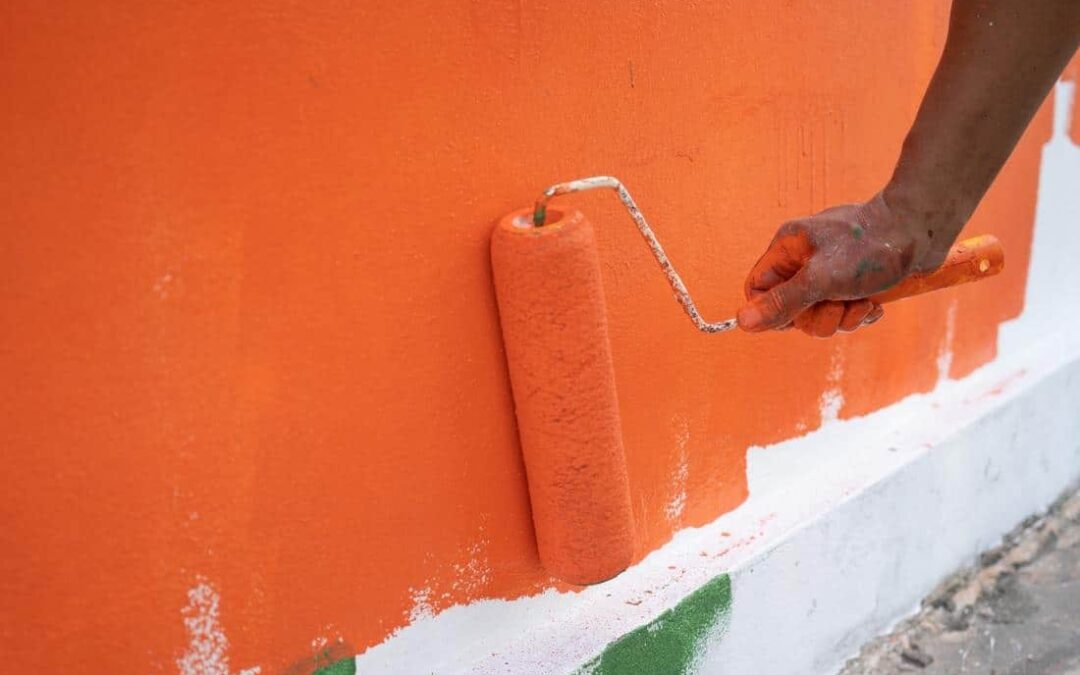Plan Your Project When the Weather Is Nice
Prepping your home for exterior paint is fairly easy with the following tips.
If you want to work on your painting project on weekends, remember that the best outside paint job takes three weekends of ideal weather. Allow for the possibility of unexpected rain or humidity. To be safe, schedule your job for a month during the dry season when temperatures range from 50 to 80 degrees Fahrenheit.
If you paint in severe weather, your uncured paint coat may blister. If your house has multiple stories, you’ll also need a sturdy ladder or a scaffold.

Contaminants must be removed.
Even though lead paint has been illegal since 1978, many homes still have it on their walls. If you suspect lead contamination, don’t try to scrape or sand it, and avoid washing. Before you begin, you must have a qualified contractor in lead abatement remove the paint. Then, before you begin any more outside painting preparation, test the paint.
Mold or mildew is a frequent pollutant, especially in humid locations. Look for black, green, or brown stains with a fuzzy texture. If you’re unsure if a stain is caused by mold, mildew, or dirt, use regular bleach to remove it. You’ve just destroyed some mold or mildew if it bleaches away.
To eradicate mold and mildew, use bleach or another EPA-registered micro biocide or fungicide. While bleach alone can be effective in a 3:1 solution with water, more effective, highly concentrated solutions are available. In addition, look for cleansers and degreasers that can remove mold and mildew and dirt, grease, and oil.
If you’re painting a property in an area where mold and mildew are likely ongoing issues, add a mildewcide (chemical mixture) to the paint to prevent future contamination problems.
Clean All Sides of the House
Get the outside surfaces of the house as clean as possible before painting to help the new paint adhere. If the home has already been painted, you may expedite this step by power cleaning the whole structure. Pressure washing is another option for stained walls. However, depending on the condition of the wood, you may want to employ gentler methods.
Power washing should be avoided if the house has soft wood siding since it might harm the wood. Instead, softwoods, such as redwood or cedar, must be cleaned by hand with soap and water, especially if they are older and damaged.
It’s simple to spray down a home’s exterior and assume it’s clean enough, but if you do, you’ll probably regret it later since the paint may not apply to the older surface. On the other hand, every minute spent carefully cleaning the property is an investment in a quality paint job and a happy customer at the end of the day.
Remove any peeling paint.
Scrutinize the home for damage and flaking paint. Filling holes, caulking surfaces, and removing loose paint may be necessary. Remove badly adhering paint with care, scraping it away by hand. Another alternative is to scrape it away with a firm metal wire brush or a power sander with a paint-stripping attachment. As you scrape, work along the grain of the wood. When working with wood shakes, remember that steel wire bits might become trapped in the soft wood. Take out all of these pieces by hand. They can ruin your paint job and produce discoloration in the wood if you don’t. When dealing with peeling paint, use a dust mask, a respirator, work gloves, and eye protection.

Sand the Outside Walls
Sanding the outside walls is required to provide a genuine mechanical connection between the paint applications. If you don’t rough up the surfaces adequately, your paint job may appear excellent when you walk away from it, but it will begin to reveal all sorts of flaws in only a few years. You may be tempted to immediately start painting, especially if you’re using oil-based paint, because oil paint wets the last layer so thoroughly that it adheres nicely initially and looks beautiful. However, for a long-lasting paint job that will assure pleased, repeat clients, undertake the sanding work.
Use medium-grit paper to resurface worn wood. Sand with fine-grit paper again in places where you’ll use glossy or semi-gloss paint, such as door and window trim. Sanding is a crucial stage in any paint job, so make sure to go over all the current paint ultimately to produce a rough surface suitable for the new paint.

Fill Gaps, Repair Holes, and Replace Wood Rot
After you’ve finished sanding, replace any siding or trim that you can’t preserve. Use epoxy to repair or replace deteriorating wood. Use an external caulk gun to fill gaps around doors, windows, and trim. Because primer protects wood, you may wish to prime it first.

Prime the Walls
Priming also aids in the adhesion of fresh paint to previously painted surfaces. Prime any spots where old paint has already been stripped off, and also prime the entire home to produce a unified paint job that looks nice all around.
Priming is essential when using latex paint to paint over an oil-based paint-covered surface. Use an exterior latex primer or an oil-based primer suggested for repainted external surfaces, depending on your paint choice.
Select a light-colored primer or one that complements the paint color you intend to use. Priming becomes much more critical if you consider changing the house’s color. After priming, do not leave any primed surfaces unpainted.

It’s Painting Time!
It’s now time to throw the spotlight on your property:
- Cover your mailbox, lighting fixtures, doors, and trim with plastic sheeting and painter’s tape before painting.
- Fill your sprayer with your choice color of eggshell latex or flat paint.
- Working from top to bottom, apply one or two applications to the house as needed.
Using two painters and a backrolling method will decrease your time in half. One person sprays the home as another smooths down the sprayed paint with a roller.
When your trim is ready to be painted, remove the plastic sheeting covering it. Choose a semi-gloss accent trim color for a classy effect.

Consider Hiring Professionals
Exterior painting is a huge investment that can make or break the look of your home. By entrusting the professionals at Enrich Construction, you can ensure that every step of the painting process will be handled with care and precision. We’ll work with you to choose the perfect color palette for your home and prepare it for a flawless paint job. So reach out to us and get started on your dream exterior!



